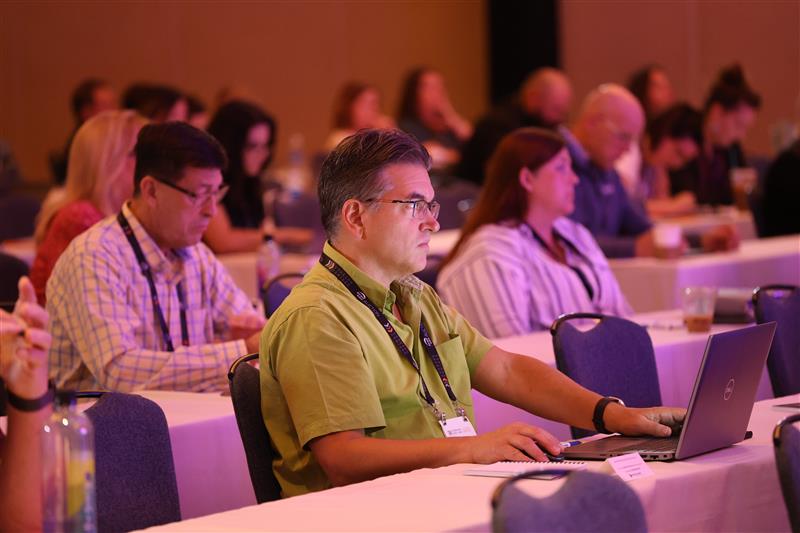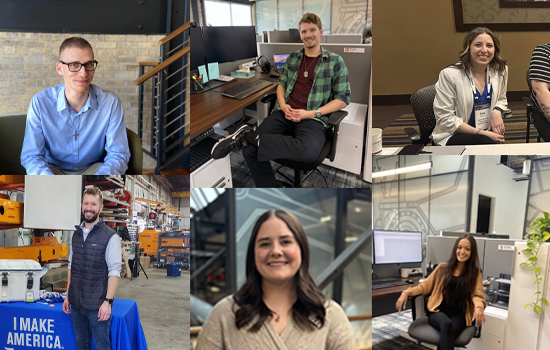By Mike Milsted, President, LAK Group --
In today’s hyper-competitive market, manufacturers rely on data to drive everything from equipment maintenance to operational efficiency. Dashboards, sensors, and predictive analytics give leaders real-time visibility into their operations, and they use that visibility to make informed, timely, and effective decisions.
We’ve seen a similar transformation in how people approach their health. Wearables like Apple Watches and Oura Rings have changed the game. These tools don’t just count steps—they track heart rate variability (HRV), REM and deep sleep, oxygen levels, and even readiness scores. They give users insights into areas they never used to think about, let alone measure. And they’ve created a powerful feedback loop—driving better decisions, greater consistency, and a heightened sense of accountability for our well-being.
We’ve grown accustomed to using data to make smarter health, energy, and longevity choices.
Yet, when it comes to one of the most important decisions in business—who we hire—we often rely on gut instinct and subjective impressions.
Want to learn more? AEM member company representatives are encouraged to join an upcoming member education webinar, set for Wednesday, June 25.
Assessments Do for Hiring What Wearables Do for Health
Just like a wearable makes invisible health patterns visible, assessments make invisible human qualities measurable. They give us structure, context, and accountability when evaluating talent—qualities that resumes and interviews alone cannot consistently provide.
Assessments clarify how a candidate thinks, works, and fits into your team and culture, whether they are a field technician, operations leader, or design engineer.
Let’s explore the parallels—and the business case.
1. They Quantify the Unseen
Resumes tell you where someone has been, and interviews reveal how someone presents. According to a Wall Street Journal article, job interviews can often become exercises in deception. Research by Dr. Robert Feldman indicates candidates typically tell two to three lies in a 10-to-15-minute interview. Lies can range from exaggerating previous responsibilities to hiding valid reasons for leaving past jobs. Candidates often engage in ingratiation, shaping their responses and personalities to match interviewer expectations, rather than presenting authentic selves.
But assessments go deeper. They quantify cognitive ability, problem-solving style, behavioral traits, and even motivational drivers.
- Will they stay calm under pressure in a high-stakes, safety-sensitive environment?
- Are they a self-starter, or someone who needs structure?
- Can they learn quickly, think critically, or collaborate effectively?
These are leading indicators of job success—yet they remain invisible unless you measure them.
2. They Create a Common Language Across Hiring Teams
Hiring decisions often involve multiple stakeholders. Without a shared framework, conversations can quickly become inconsistent: one interviewer favors experience, another values charisma, and another looks for cultural fit.
Assessments give everyone a consistent, objective framework. They enable structured discussion around key traits, job fit, and strengths or development areas. This minimizes bias, aligns decision-makers, and increases the chances of selecting the right person for the role.
3. They Help You Match the Role to the Person—and Vice Versa
Every job has a profile. The behavioral makeup of a top-performing service technician is different from that of a supply chain manager. A successful account executive will have different traits from a safety supervisor. Assessments help define and measure these differences with precision.
Instead of hiring based on general “fit,” you can build profiles for success, compare candidates to those profiles, and hire confidently.
4. They Enable Proactive, Not Reactive, People Decisions
Just like wearables prompt us to make proactive changes in our lifestyle—more sleep, more movement, less stress—assessments allow organizations to take action before problems arise.
You can:
- Spot potential misalignments during the hiring process.
- Identify development needs early.
- Build succession plans and internal pipelines based on real data.
This proactive approach reduces costly misfires. According to various studies, a bad hire for an entry-level position can cost at least 30% of that person’s annual salary, and it can take six months or more for a management hire to break even on productivity.
5. They Reinforce Focus, Accountability, and Continuous Improvement
When people start tracking their sleep or heart rate, they become more focused on making better choices. The same thing happens in organizations that use assessments. Hiring becomes more intentional, development becomes more individualized, and leadership conversations become more meaningful.
Assessments drive a culture of accountability around talent, just as wearables do around health.
Why It Matters in Equipment Manufacturing
In the equipment manufacturing industry, precision matters. Downtime is costly. Safety is paramount. Innovation depends on having the right minds on the correct problems. Hiring mistakes don’t just hurt productivity—they impact morale, customer satisfaction, and profitability.
As labor markets tighten and technology evolves, workforce decisions need to be just as data driven as operations strategies. Pre-employment assessments help bridge that gap by turning hiring from a subjective leap of faith into a strategic business decision.
Data is transforming every part of our lives. We’ve embraced it to manage our health, finances, and thermostats. Now it’s time to embrace it in hiring, coaching, and leading.
With pre-employment assessments, you gain more than just insight—you gain an edge. And just like your wearable, it’s not just about the data. It’s about the decisions you make with it.
Want to learn more workforce strategies and tactics? AEM members are encouraged to join AEM’s Workforce Development Committee.





